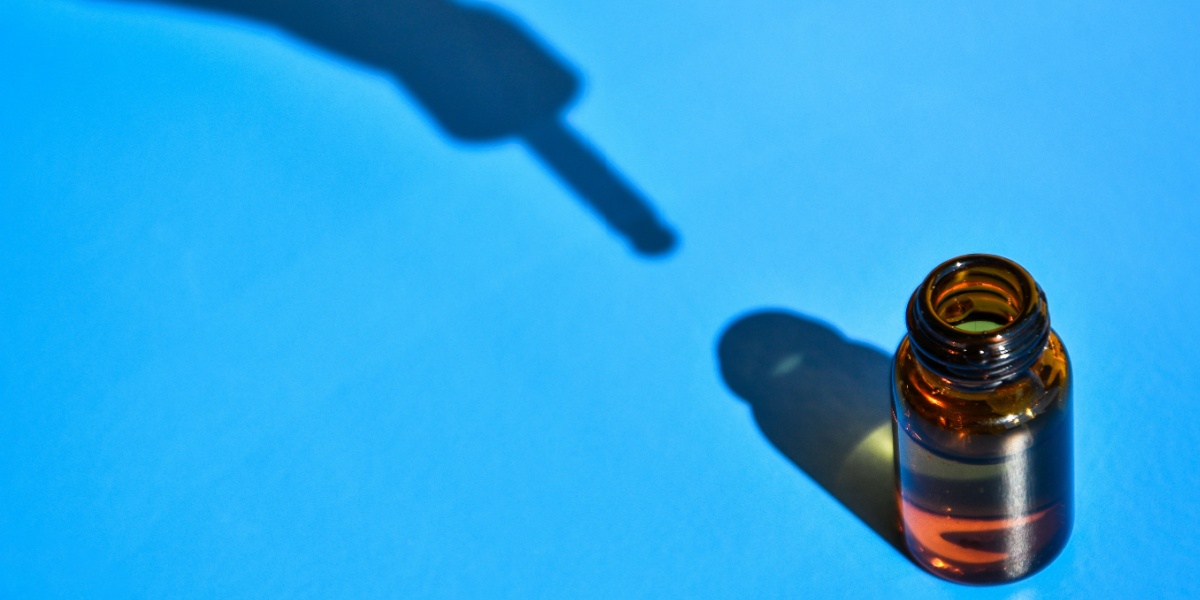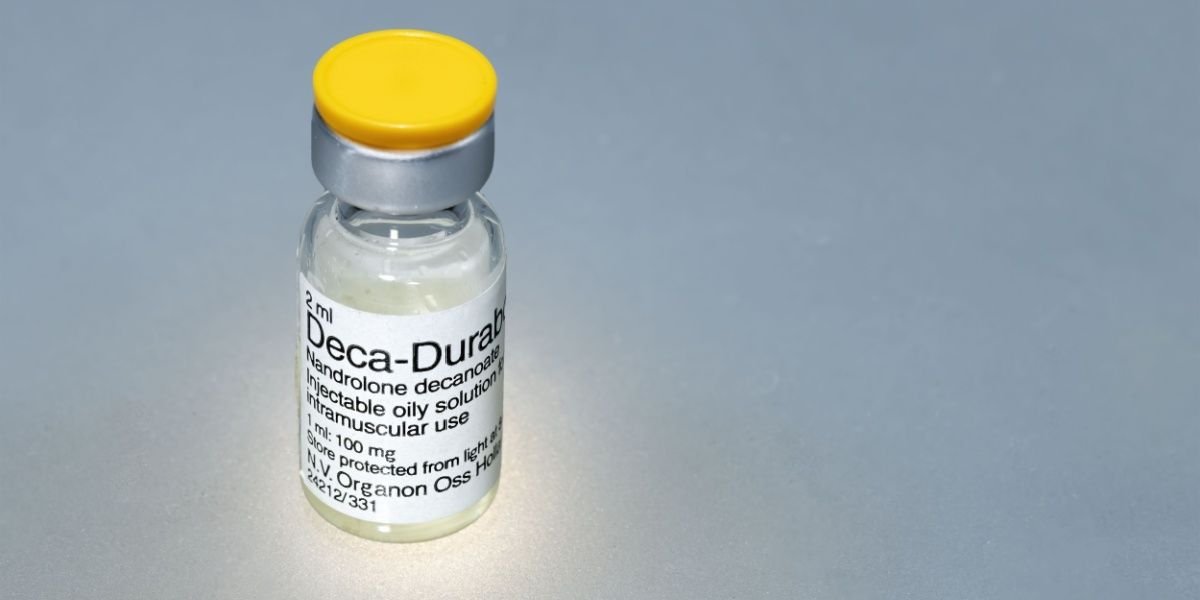Bromantane is a Cold War oddity that made its way from Soviet military rations to modern nootropic forums. The compound, a hybrid stimulant and anxiolytic, was created in the 1980s to keep soldiers, pilots, and cosmonauts alert under heat, hypoxia, and stress. It later tripped up five athletes at the 1996 Atlanta Olympics, prompting an immediate ban by the International Olympic Committee.
Today, bromantane (brand name Ladasten) is still prescribed in Russia for fatigue and anxiety, yet in most other countries it can only be bought online as a “research chemical.”
- Adaptogenic stimulant: Bromantane raises dopamine and serotonin while reinforcing the calming GABA system, giving steady energy without the jittery spike of caffeine or amphetamine. [1][2]
- Low dependence potential: Animal studies and a 728-patient Russian trial found no tolerance, craving, or withdrawal; most users describe a calm lift rather than euphoria. [3][4]
- Regulatory limbo: Unscheduled in the United States yet banned by the World Anti-Doping Agency; purity varies because it is sold only through gray-market suppliers. [5][6]

Understanding the bromantane nootropic
Chemically, bromantane is an adamantane derivative: an adamantane “cage” linked to a bromophenyl amine. Russian pharmacologists call it an actoprotector—a synthetic adaptogen that lets the body do more work with less physiological strain. [1] In Western terms, an actoprotector is similar to a performance-enhancing adaptogen, boosting stamina or resilience without overstimulating the nervous system.
In rats, micro-dialysis shows that bromantane keeps striatal dopamine elevated for roughly eight hours while mildly boosting serotonin levels; it leaves adrenaline and blood pressure largely unchanged. [2] It also strengthens GABA signaling, explaining why consumers often feel composed rather than wired. [3]
The Soviet military field-tested bromantane in Afghanistan to fight marching fatigue and heat stress. When the USSR collapsed, Russian regulators licensed it in 1997 for asthenia (chronic fatigue with anxiety). A standard course is 50–100 mg once every morning for four weeks, often repeated yearly for persistent fatigue. [4]
Its Olympic scandal sealed its sporting fate, but inside Russian clinics, bromantane has remained a low-side-effect option for patients who can’t tolerate classic psychostimulants.
Effects of bromantane
Laboratory work first revealed its “non-exhaustive” profile. Rats receiving bromantane swam longer, ran farther, and tolerated heat or low oxygen better than controls; they did not show heart-rate spikes or blood pressure responses typical of amphetamines. [1] In a small study of sleep-deprived human volunteers, a single 100 mg dose sharpened attention, cut reaction-time errors, and reduced self-rated anxiety without increasing blood pressure. [2]
A larger, multicenter Russian trial followed 728 patients with asthenia. Doses of 50–100 mg/day for twenty-eight days improved physician-rated fatigue in 76 % of cases; benefits on mood, motivation, and sleep persisted one month after discontinuation. [4] Reported side effects were minor, mostly transient irritability or difficulty falling asleep when taken too late in the day.
Forum anecdotes mirror the research. Many Reddit and Longecity members describe bromantane as a “calm drive” that makes tedious tasks tolerable and tamps down social anxiety. A common strategy is to use it two or three days per week to avoid tolerance. A smaller group says they feel almost nothing unless they double the dose, while a handful report insomnia if they take it after mid-afternoon. Those variations set up a key question.
Psychoactive effects & why responses differ
Bromantane is psychoactive, but the feeling varies as widely as reactions to Ritalin, for example. PET research on methylphenidate shows two people can block the same proportion of dopamine transporters. One may still feel flat while the other is euphoric. Baseline dopamine tone and receptor genetics likely explain the difference. [7] Bromantane follows the same rule.
- If you start dopamine-low and fatigued, bromantane’s mild boost can bring a distinct “calm motivation,” brighter colours, even slightly enhanced sociability.
- If you are already alert, the same capsule may feel neutral—or it may overshoot, producing jitters or next-day brain fog if you exceed 200 mg.
Several factors steer the outcome: sleep debt, COMT and DAT1 gene variants, current mood, and even the timing of the dose. [3][7] This explains why one consumer calls it “phenomenal” and another shrugs, “I felt nothing.”
How is it used?
- Medical course (Russia): 50 mg tablet after breakfast for four weeks.
- Nootropic routine (online buyers): 50–100 mg powder or capsule with fat; popular cycles are 5-days-on/2-off or 4-weeks-on/2-off to hold tolerance at bay.
- Stacks: It is often paired with caffeine for sharper alertness or L-theanine or phenibut for extra calm. Combining it with potent stimulants or MAOIs is discouraged.
Bromantane risks
Most short-term data look reassuring, but no drug is risk-free.
- Side effects: About 3% of patients in the Russian trial reported mild insomnia, headache, or irritability. [4] In other reports, sleep disruption dominates complaints and usually can be traced back to late-day dosing.
- High doses: Self-experiments above 200 mg sometimes lead to tension headaches, restlessness, or a groggy “overdone” feeling the next day. Animal work shows that ultra-high doses flip to sedation, hinting at cholinergic overload. [3]
- Drug interactions: Bromantane induces CYP-450 enzymes in the liver; in rats, it cuts thiopental sleep time by 33%. Thus, it could shorten the action of benzodiazepines, birth-control pills, or SSRIs (antidepressants). [3]
- Long-term unknowns: Human studies rarely exceed 8 weeks. Over the years, effects on liver enzymes, hormones, or cognition remain uncharted territory.
- Supply quality: Independent labs have detected underdosed or contaminated batches from gray-market vendors. Potency is guesswork unless you see a third-party certificate of analysis (COA).
Is bromantane abused?
Recreational abuse is almost unheard of because bromantane generates no rush. The U.S. NPS Discovery program has recorded only 1 (one) toxicology case (2024) where bromantane appeared alongside methamphetamine and a designer benzodiazepine, suggesting niche polydrug tinkering, not mainstream misuse. [5]
Athletes, however, have a clear incentive: Bromantane’s endurance boost and mild masking properties once tempted Russian Olympic teams. Outside sport, “abuse” usually means megadosing for a bigger kick, an approach veterans say backfires.
Is bromantane addictive?
Addiction hinges on tolerance, craving, and physical withdrawal. In animals, bromantane produces none of these hallmark signs. [3] The 728-patient trial likewise found no withdrawal; many subjects felt subjectively better a month after stopping, implying a lasting re-set rather than a dependency loop. [4]
Online users echo this sentiment. Most can take or leave the drug. Still, psychological habit is possible if someone leans on bromantane as a crutch for motivation, so sensible cycling is advised.
Bromantane legality
- Russia: Prescription-only as Ladasten.
- United States/Canada/EU: It is not scheduled or approved. Bromantane does not appear in the U.S. Pharmacopeia, reinforcing its status as a gray-market substance with no recognized medical use in American clinical settings. Personal imports sometimes slip through customs and get seized as unlicensed medicine.
- Australia/New Zealand: Usually refused entry as an unapproved therapeutic good.
- Sport: WADA banned; urinary metabolites remain detectable for up to 14 days. [6]
Bromantane doping
The Atlanta Olympic Games 1996 marked the drug’s public debut when five athletes, including two Russian bronze medalists, tested positive and lost their medals. [6] Today, any competitor caught risks a multi-year suspension.
Because bromantane’s metabolites tend to linger in the system, even pre-season use can cause a positive test at competition time.
Bromantane and stimulant addiction treatment
No approved drug can yet blunt methamphetamine or cocaine withdrawal, according to the literature. Bromantane’s gentle dopamine lift plus anti-anxiety edge has sparked grassroots interest in recovery forums. Anecdotal reports from ex-stimulant users suggest 50 mg helps them rise from crash fatigue without triggering cravings.
Formal human trials are absent, but animal studies show bromantane normalizes stress-blunted catecholamine systems and boosts immune markers, both relevant to stimulant dependence recovery. [2]
Until proper research confirms sufficient safety and benefit, clinicians view such use as experimental. Anyone in recovery should involve an addiction specialist before self-medicating. In cases of stimulant use, contingency management is the gold standard.
Final thought
Bromantane shows that a stimulant need not be harsh to be helpful. Evidence, mostly Russian in this case, indicates it lifts fatigue, sharpens focus, and reduces anxiety with few acute downsides. Yet long-term data remains scarce, product purity is uncertain due to a lack of regulations, and athletes face strict bans.
When used sparingly, with lab-verified products and sensible timing, bromantane can deliver “calm energy.” However, solid research, not just anecdotes, will decide whether this Cold War relic earns a stable place in modern medicine.




